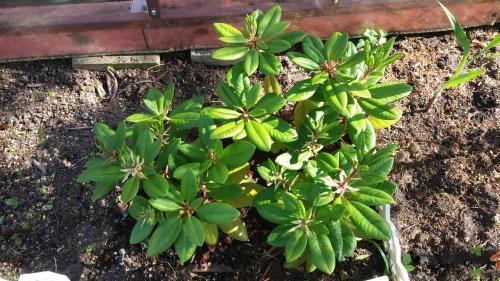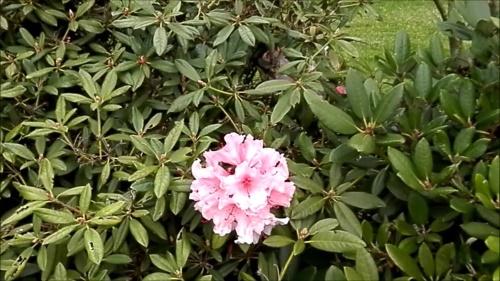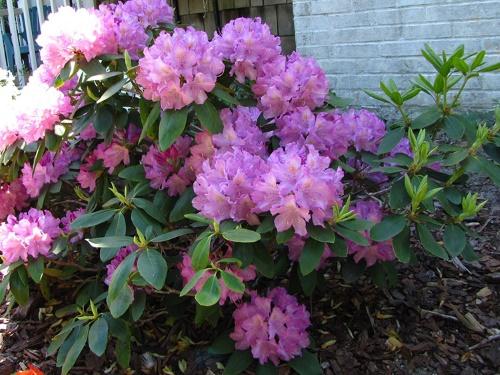Finding out what to do if rhododendron does not bloom
 It is no secret that the main advantage of rhododendrons is its simply huge inflorescences, flaunting with chic tassels on the tips of the branches. However, it sometimes happens that the shrub stubbornly refuses to set buds or gives very little of them. What if the rhododendron does not bloom, and what circumstances may precede this?
It is no secret that the main advantage of rhododendrons is its simply huge inflorescences, flaunting with chic tassels on the tips of the branches. However, it sometimes happens that the shrub stubbornly refuses to set buds or gives very little of them. What if the rhododendron does not bloom, and what circumstances may precede this?
On average, the flowering of rhododendrons lasts from 2 to 3 weeks. Depending on the variety, the buds appear from April to June, and re-flowering in August is also possible. If it is already mid-summer outside the window, and the inflorescences have not blossomed on the plant, you should worry.
The reasons for the lack of flowering

- unsuitable variety;
- incorrectly selected landing site;
- lack of nutrients;
- poor watering or no watering at all.
Special patience should be shown when growing crops from seeds. Such a seedling grows up and "ripens" rather slowly and for a long time. The first flowering occurs no earlier than after 5 years, and in some varieties even after 7 years.
What to do if rhododendron does not bloom
 You can correct the situation and help the plant in almost any case. An exception is the selection of an unsuitable variety. Rhododendrons came to us from a warm and humid climate, so only acclimatized varieties with increased winter hardiness can survive the Russian winter.
You can correct the situation and help the plant in almost any case. An exception is the selection of an unsuitable variety. Rhododendrons came to us from a warm and humid climate, so only acclimatized varieties with increased winter hardiness can survive the Russian winter.
Kamchatka, Japanese, the largest, yellow rhododendrons will take root and will bloom even in the middle lane. But the beautiful red-flowered varieties of large-leaved evergreen rhododendrons will freeze slightly.
In an open, sunny place, blown by the winds, the bush will feel uncomfortable. It is better, while he is still young, to transplant the flower to a cozy area with diffused lighting, and then flowering will be restored.
For normal development and flowering, a culture needs an acidic and nutritious soil with a high humus content. Mulching with peat will help maintain acidity. If the rhododendron does not have enough food to lay the buds, the bush should be fed at least twice a season. In early spring and in mid-July (after flowering), mineral complexes should be added. There are balanced special fertilizers for rhododendrons... The perennial will not have enough strength for flowering and with a lack of moisture. This is a moisture-loving culture, so you need to water the bush often.